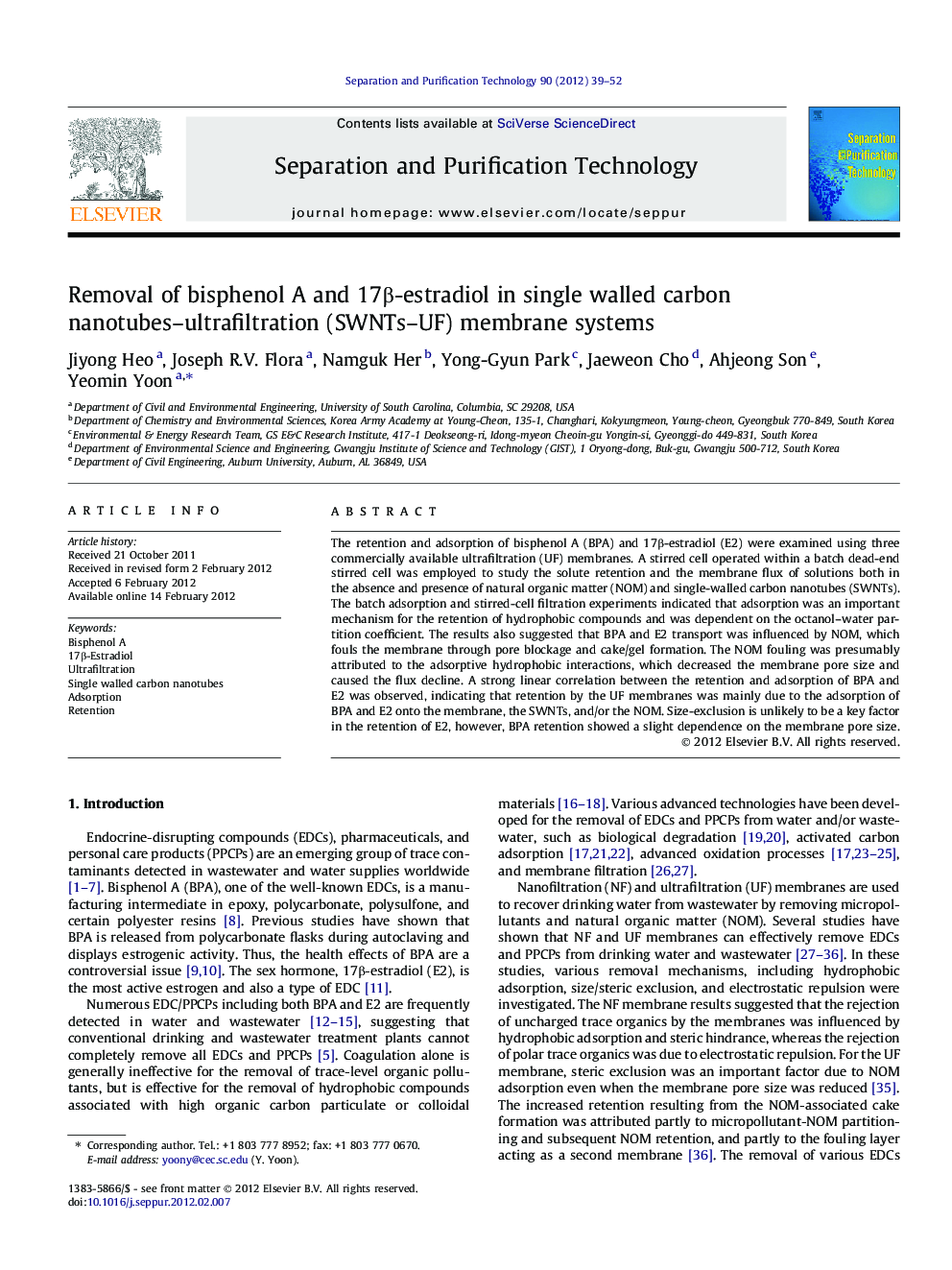| Article ID | Journal | Published Year | Pages | File Type |
|---|---|---|---|---|
| 642082 | Separation and Purification Technology | 2012 | 14 Pages |
The retention and adsorption of bisphenol A (BPA) and 17β-estradiol (E2) were examined using three commercially available ultrafiltration (UF) membranes. A stirred cell operated within a batch dead-end stirred cell was employed to study the solute retention and the membrane flux of solutions both in the absence and presence of natural organic matter (NOM) and single-walled carbon nanotubes (SWNTs). The batch adsorption and stirred-cell filtration experiments indicated that adsorption was an important mechanism for the retention of hydrophobic compounds and was dependent on the octanol–water partition coefficient. The results also suggested that BPA and E2 transport was influenced by NOM, which fouls the membrane through pore blockage and cake/gel formation. The NOM fouling was presumably attributed to the adsorptive hydrophobic interactions, which decreased the membrane pore size and caused the flux decline. A strong linear correlation between the retention and adsorption of BPA and E2 was observed, indicating that retention by the UF membranes was mainly due to the adsorption of BPA and E2 onto the membrane, the SWNTs, and/or the NOM. Size-exclusion is unlikely to be a key factor in the retention of E2, however, BPA retention showed a slight dependence on the membrane pore size.
► We study single-wall carbon nanotubes to remove micropollutants. ► Adsorption is an important mechanism for the retention of hydrophobic compounds. ► Less removal was obtained in the presence of natural organic matter.
